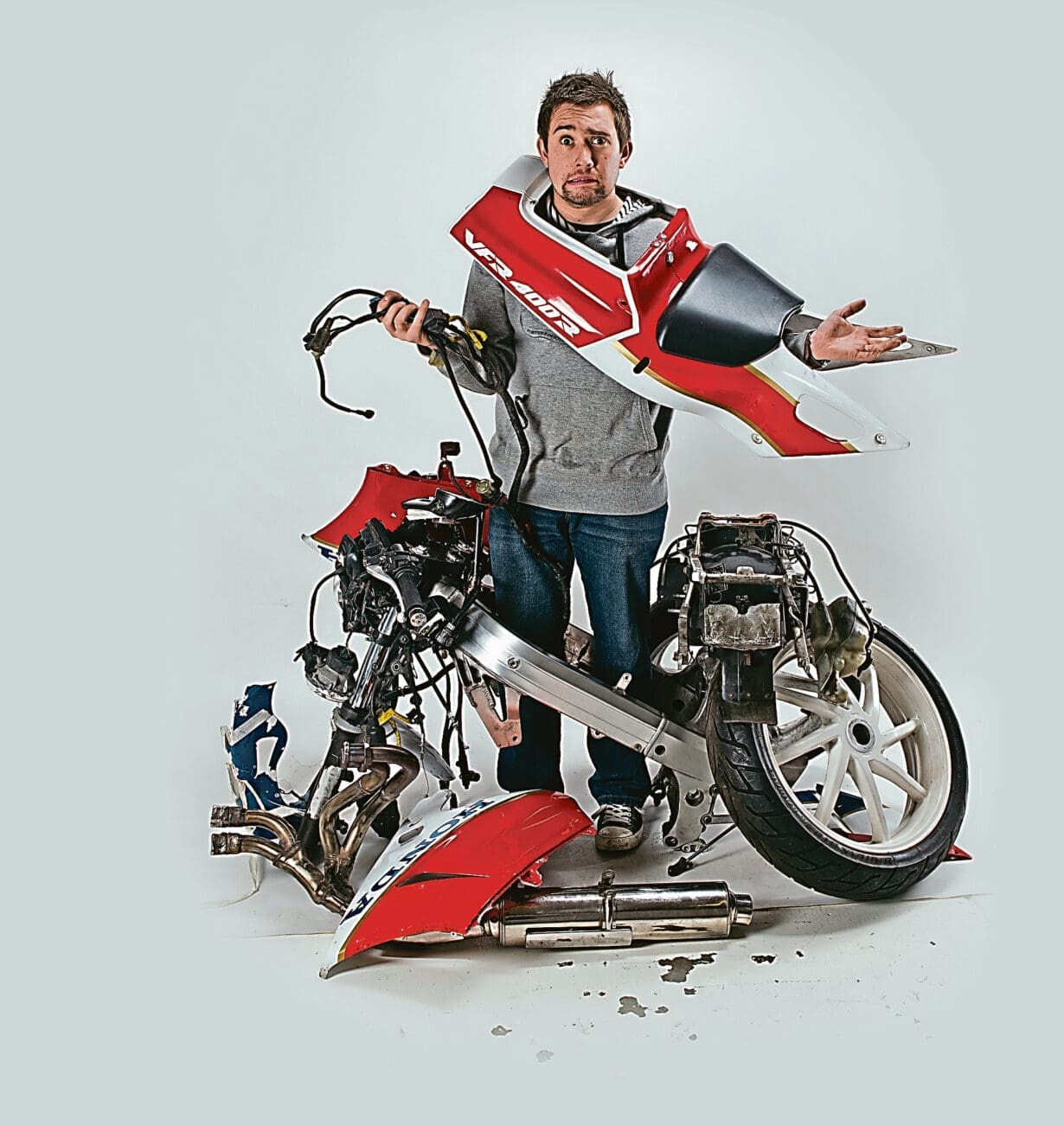The good folks at Classic Bike Guide magazine have been sharing their hard-won wisdom about what’s involved when hunting out and fixing up old bikes.
WORDS and PHOTOS: Matt Hull
What are you buying?
Look at what you’re getting – is it complete? If it’s a runner, then get a ride if you can (make sure you have insurance, and most sellers will insist on cash in their hand first). Hopefully, it’s cold first (had they had it running before you came – then why?). Hear it run. Are the tyres legal (1mm tread)? Or have cracks in the sidewall?

Here’s a quick checklist. Centrestand – does it lift the bike up? Wheels – are they straight? Check the spokes for loose or broken ones; rock the wheels for play in the wheel bearings; look for worn chains (will pull away from the rear of the sprocket) and worn sprockets… teeth like shark’s teeth. Are the fork stanchions pitted? Are the head race bearings loose/notchy/stiff? Do the clocks work? Is there rust at the bottom of the petrol tank? Is the seat ripped? Is there play in the swingarm? Do the brakes work/feel alright? Are the various cables in good order? And we haven’t even got to the engine or gearbox yet. Ask questions – lots. What oil do they use? When do they check the valve clearances? What problems have they had? Does it like choke when cold or not? You’ll be getting an idea of the owner, which gives you an idea of how the bike’s been treated. If you’re serious, then take someone who isn’t wearing rose-tinted specs…
Legality
Is there a (V5) logbook? Is the name that of the seller? Does the address tie up with the story? Sadly, many bikes are being sold by the family of a deceased owner, in which case there should be evidence. If in doubt, politely walk away.
Legitimacy
What is ‘matching numbers’? This is when the registration number, engine number (stamped on the block) and frame number match from the factory records. They should at least match those on the logbook. Some bikes may have had their reg number sold and reissued with an age-related plate; others will have had an engine go pop and it was more economical to swap the engine with another. This is not a problem as long as everything adds up, but it must be reflected in the price.
Paperwork
Paperwork is one of the best ways to look back into the machine’s past. Old MoT certificates, service receipts, parts receipts and even old tax discs can help build up a picture of whether you are looking at an old family friend or a hastily put-together mis-mash for a quick profit.
Price
Set a budget. Do not, under any circumstances, buy the cheapest you can afford – you are not the exception. Talk to club members and check dealer ads. Auction prices are an accurate reflection of price but are more applicable to expensive machines. Know how much work will cost: how much will a rebuilt wheel, an exhaust or an oil leak cost to fix? And beware, like the plague, ‘shiny shit syndrome’. Look beyond nice paint and chrome. Do your homework.
Old bikes can break, leak, misfire, not start and have scratches. There’s no warranty, and they assume some amount of common sense. Brakes are poor and lights are terrible. Sorry to be harsh, but we say this as most problems old bike specialists see are owners who don’t know what they’ve got into.
Check back tomorrow for part II: You’ve bought one, what next?


